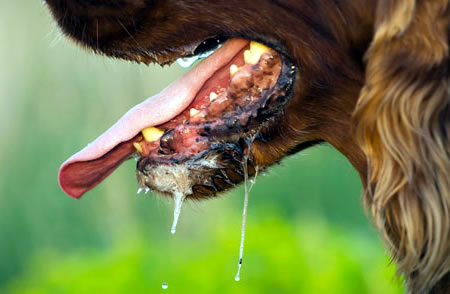RABIES is a zoonotic viral disease of all warm-blooded animals. However, dogs are renowned as the vectors of the disease in most developing countries while wildlife rabies is more common in the developed countries. It is an acute viral non- suppurative encephalitis which has been well known for more than 4,300 years. Both human and animal populations are at risk due to the endemicity of rabies in many parts of the world. Globally, it has been estimated that about ten million persons are bitten by animals yearly and considered for prophylactic management against rabies. The disease is associated with 59,000 annual mortality with about 56 per cent and 44 per cent occurring in Asia and Africa respectively. Average records of age-stratified incidence rates of human cases of rabies (and therefore rabies deaths) shows that between 30 per cent and 50 per cent occur in children under 15 years of Age. Rabies was first reported in Nigeria in man in 1912 and by 1925 it was reported in animals. About 10, 000 cases are reported annually in man. This makes the disease a persistent endemic problem. Inspite of its endemic nature, the true picture of the disease burden has not been fully understood due to the challenges associated with animal disease reporting in Nigeria.
Between 1928 and now, more than 5,000 cases of animal rabies have been diagnosed by the National Veterinary Research Institute, Vom. Unfortunately, reports on rabies to the International Community is low, for example, Nigeria was reported to submit information on rabies to the World Health Organisation only once between 1998 and 1992.It is reported that there has not been a major improvement in this pattern till date. As a disease of antiquity, the word ‘rabies’ was derived from a Latin word-‘rhabas’ meaning ‘to do violence’ while the Genus name Lyssa (to which rabies and rabies- related virus belong was derived from the Greek word-‘Lyssa’ or ‘lytta’ meaning ‘madness’. Both Democritus in 500 B.C. and later Aristotle in his Natural History of Animals accurately described the condition. Hippocrates, Homer, virgil, Xenophon and others also documented similar illness believed to be rabies. The disease has persisted globally with the exception of some countries where there is strict quarantine system, rigorous eradication or natural barrier like maintains and rivers.
Transmission: Rabies virus is transmitted in most cases by bites and to a lesser extent by contamination of cuts, wounds and mucous membranes with saliva from rabid animals. Non-bite related exposures to the virus of apparent highest risk are those from large amounts of aerosolized rabies virus, organs transplanted from patients who died of rabies and contact of saliva or nervous tissue from a rabid animal with mucous membranes or scratches. Transplacental and trans-mammary transmission has also been reported.
The clinical signs of rabies depend on the stage of the disease. These include prodromal, furious, dumb and atypical stages. Associated clinical signs usually include sudden negative behavioural changes, undue aggression, voice changes, fear of water (hydrophobia), extreme excitement, excessive salivation, fever, pica and generalized restlessness. Therefore, efforts to end the scourge of rabies and its associated devastation should target the dismantling of the vicious cycle and hence transmission. That is why the global theme of this year’s world Rabies Day i.e. End rabies: Collaborate, Vaccinate is very crucial , apt and appropriate.
Bringing rabies to an end by the year 2030 globally as envisioned by the United Nations via the Sustainable Development Goals requires strong collaboration and synergistic partnership among all stakeholders, especially, the general public, dog owners, veterinary authorities, physicians and the government at all levels. This collaboration is only achievable through the adoption of ‘One Health Approach’. One Health approach is a broad-based strategy for managing infectious diseases, through multidisciplinary communication and collaboration with optimal environmental, human, domestic animal and wildlife health outcomes. It offers a multidisciplinary coordinated opportunity to improve our capacity to effectively prevent and control the disease.
Vaccination of dogs remains the only way to prevent the disease. A comprehensive vaccination programme requires a strong advocacy for responsible pet ownership in both rural and urban areas. It is also crucial to develop holistic stray animal management program, enactment of a sustainable policy framework and legislation, strict enforcement of quarantine regulations and rational post-exposure management. Adoption of statewide policy applicable throughout the country is a desirable step that could lead Nigeria to exit the unenviable club of rabies endemic countries. National rabies management program could be established for the sole purpose of coordinating rabies eradication activities. The Nigerian Quarantine Service and the Federal Department of Veterinary and Pest Control Services should make sure that all importers of dogs and other species conform to the highest possible standard obtainable anywhere in the world. The mass media including the traditional print and electronic platforms along with the new media should also strengthen advocacy against the spread of rabies in order to enhance continuing education and public awareness of these dreaded diseases.
More veterinarians should be employed in the public sector across the federation to strengthen policy formulation and implementation. This is because there is a dearth of qualified veterinary personnel in many states in Nigeria. As we mark the year 2020 Word Rabies Day today, the implementation of the above recommendations would go a long way to achieve the global theme; that is, End Rabies: Vaccinate, eliminate.
Dr. Faramade is Principal Veterinary Research Officer, National Veterinary Research Institute, Vom.
YOU SHOULD NOT MISS THESE HEADLINES FROM NIGERIAN TRIBUNE
Ondo 2020: PDP not divided over Jegede ― Campaign organisation
The All Progressives Congress (APC) has won 14 out of the 18 chairmanship seats in the just-concluded Ondo State local government elections conducted in the state last Saturday.
The chairman of Ondo State Independent National Electoral Commission (ODIEC), Prof. Yomi Dinakin who made this known while announcing the results of the election said the commission is still awaiting the result of four local government areas….End rabies End rabies
Stop harassing Mailafia, Secondus tells DSS
The National Chairman of the Peoples Democratic Party (PDP), Prince Uche Secondus, has admonished the Directorate of State Security Service (DSS), to refrain from further harassment of former Deputy Governor of the Central Bank of Nigeria (CBN), Dr Obadiah Mailafia…End rabies End rabies
UPDATE: Many Inured In Gas Tanker Explosion In Iju Ishaga
A gas tanker explosion in Iju Ishaga, Ifako ijaiye local government area of Lagos State has left many injured. The explosion occured at Cele Bus stop, Iju Ishaga on Thursday…End rabies End rabies
WATCH TOP VIDEOS FROM NIGERIAN TRIBUNE TV
- Relationship Hangout: Public vs Private Proposals – Which Truly Wins in Love?
- “No” Is a Complete Sentence: Why You Should Stop Feeling Guilty
- Relationship Hangout: Friendship Talk 2025 – How to Be a Good Friend & Big Questions on Friendship
- Police Overpower Armed Robbers in Ibadan After Fierce Struggle






